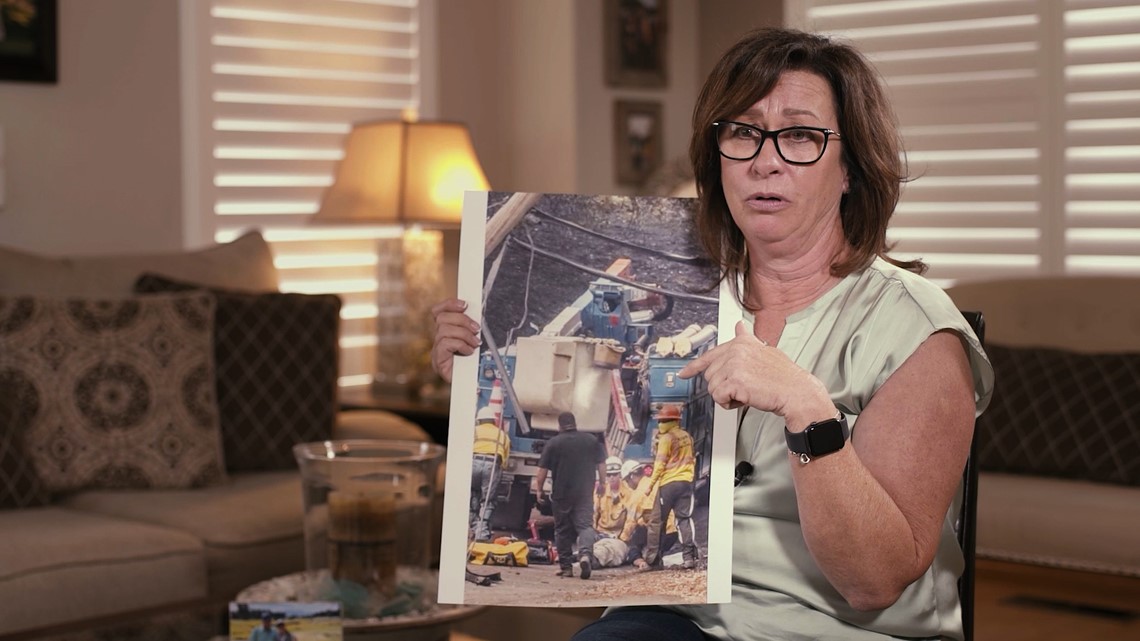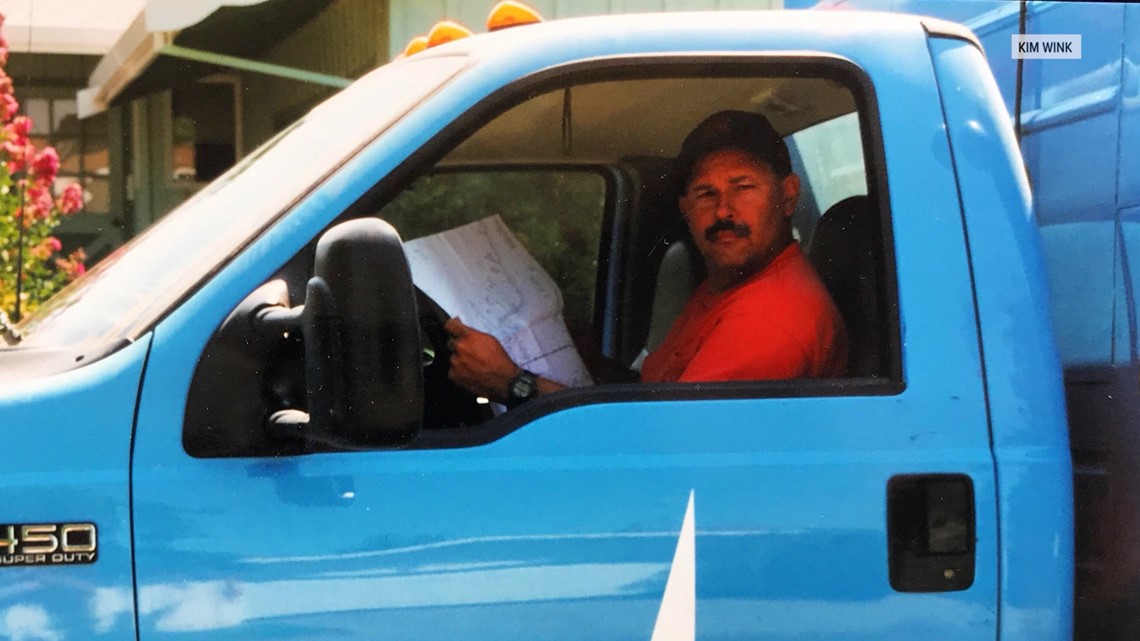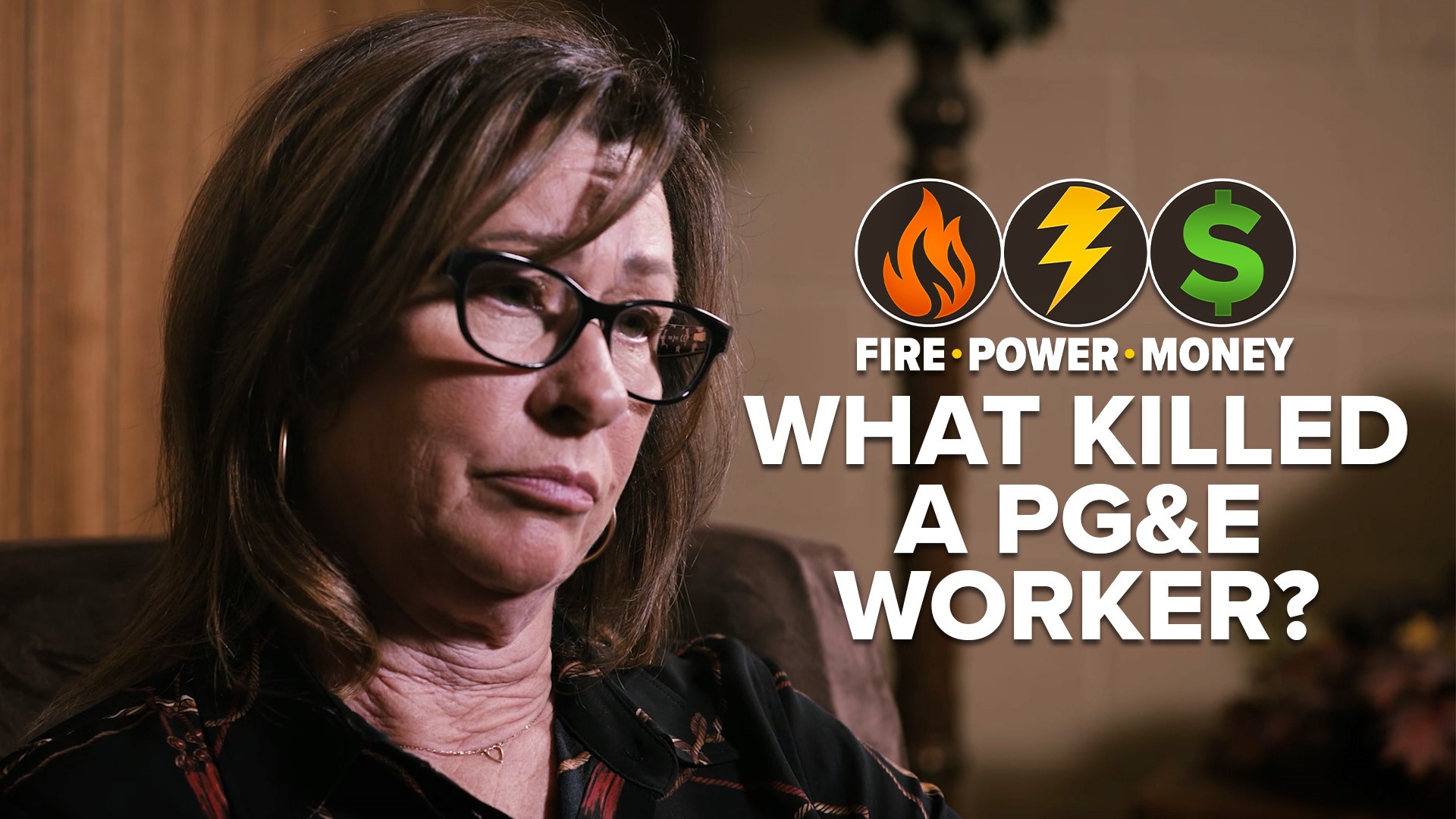SACRAMENTO, Calif. — As Steve Wink’s family prepares for their second Christmas without him, they’re suing Solano County for mishandling the investigation of his death.
“This is a complex grief because there's no answers,” said Kim Wink, Steve’s widow. “Steve was the rock of our family.”
Steve was found dead in his PG&E work truck, which he drove into the LNU wildfire complex alone in an apparent effort to assist other PG&E crews in a burning rural area outside of Vacaville. The truck was found alongside a damaged communication line and a burned pole holding it up.
An investigation earlier this year by ABC10’s FIRE - POWER - MONEY reporting project exposed a cascading series of failures by Solano County’s combined sheriff and coroner’s office in responding to the death.
The combination of the failures amount to a grim reality: Steve’s death may never be fully explained.
“Unfortunately, I don't think we'll ever know the answer,” said pathologist Mike Doberson, a retired longtime coroner in Colorado who investigated Columbine and other major tragedies. “This was so inadequately handled.”
Steve Wink’s death certificate from Solano County says he died of natural causes, rather than in a workplace accident.


Kim Wink says the county has refused multiple requests to amend Steve’s death certificate, despite an on-camera admission from authorities the death investigation was mishandled.
“It’s absolutely an industrial accident and it should have been documented,” Sgt. Jacob McNeil told Mrs. Wink in the video obtained by ABC10.
“The death certificate is important to me, because it reflects how he died. And it's, to me, it's falsified,” said Kim Wink. “Bottom line.”
Through her lawsuit, she’s hoping the county will change the death certificate so it reflects the fact Steve died on the job in an active fire zone.
“Society has a right and need to know how people are dying,” said Tim Walsh, Kim’s attorney.
ABC10’s investigation of Wink’s death found the Solano County Sheriff’s Office was called to investigate the death on the day it happened.
► Follow Brandon on Twitter
Personnel in both the patrol and coroner functions of the office were made aware of Steve Wink’s death, but there is no record of any deputy responding to the death scene or to the hospital where his remains were taken.
“People are dying in the community and they're not going out to the scene,” said Kim Wink.
As a result, there was no official documentation or photographs taken of the death scene.
“Even if they wanted to investigate 24 hours later,” said Walsh, “the whole place was cleaned up, almost like a crime scene... clean it up before the police come.”
A freelance photojournalist’s images, licensed to ABC10, do capture Steve Wink’s PG&E colleagues attempting to revive him with CPR.
The images show a lot of key evidence that was never documented, including damaged utility poles and lines hanging over Steve’s PG&E truck, which also shows signs of damage.


A metal ladder rack lies on the ground beside Steve’s truck, having been ripped off the bolts ordinarily securing it.
“And they didn't go,” exclaimed attorney Tim Walsh. “Why wouldn't they? It's unexplainable.”
Coroner’s deputy Jessica Dew, also named in the lawsuit, names an emergency room nurse as the only person she questioned – by telephone – about Steve’s death at the time he died.
The nurse relayed Steve had cardiac problems two decades prior to his death. Steve’s death was ruled natural and blamed on his heart health.
ABC10’s investigation also found evidence of injuries to Steve’s body, which weren't mentioned in the coroner’s report or autopsy.
CLICK HERE to watch every episode of ABC10's Fire - Power - Money series.
The body was allowed to leave sheriff’s office custody to be harvested for tissue donation, including significant amounts of skin, bones, and both of Steve’s eyes.
Before collecting the body parts, regional tissue donation authority Donor Network West did document injuries to Steve’s left eye and upper and lower body.
It’s unclear whether the injuries may be captured in photographs taken at the company’s tissue harvesting facility in San Ramon, nearly 50 miles away from Solano County’s morgue.
The trip Steve’s body took to the facility was omitted from the coroner’s report, an apparent violation of the office’s own written procedures.
“An Amazon package gets better tracking than my husband’s body did that day,” Mrs. Wink said in our initial investigation.


Kim Wink’s lawsuit seeks damages you can’t put a price on: the pain of never knowing how her husband died.
It also seeks hundreds of thousands of dollars in damages she can put a price on: lost benefits she would have received if his death was ruled accidental.
Since we first reported on this story, Kim says PG&E has decided to give her benefits it originally denied.
“They will retro Steve's benefits back to me, the medical bank that they denied me at the beginning,” said Wink.
A PG&E email to her says the company’s legal and benefits offices ”changed this rule” to “assist… with payment of survivor coverage and other eligible expenses under our Retiree Medical Plan.”
Wink says the company also reduced her monthly healthcare premium.
“I think it's a great win for the widows… all I could think about if I was in my 20s, when Steve and I had three little kids, I would have lost everything without these benefits. And now I know that other families are gonna get it,” she said.
PG&E’s public relations staff received our questions asking for more specifics about the rule change but we received no answers in reply.
“It's nice that they're changing their policies,” added Wink. “But there's still a lot that they haven't answered.”
Kim says she’s still shocked PG&E hasn’t told her all it knows about her husband’s death.
“I was a PG&E wife for 35 years. I'm devastated, how they handled this. How they won't even talk to me or answer questions. I don't think anybody should be treated like this on any fatality of a family,” said Wink.
PG&E did not provide any comments when asked to respond to Wink’s complaints about the company’s behavior.
CLICK HERE to watch every episode of ABC10's Fire - Power - Money series.
“To this day, two and a half years, they never have sat me down and talked to me about Steve's death on that day,” continued Kim. “I didn't even know where he died for five months. My friend and I drove for five and a half hours [to find the location.]”
Wink still wants to sit-down with the company, but not to be consoled. She says PG&E has explaining to do.
“Well, I would like to know where the ladder rack is,” she said of the missing evidence.
She also wants to know who sent Steve up alone into the fire zone, who took his truck off the hill, and what the company learned from the evidence it gathered.
“It would be nice to know the answers to these questions,” said Wink. “As a widow and as the representative of the Wink family it would be nice to know what they know so we can move forward, so we can heal.”



















